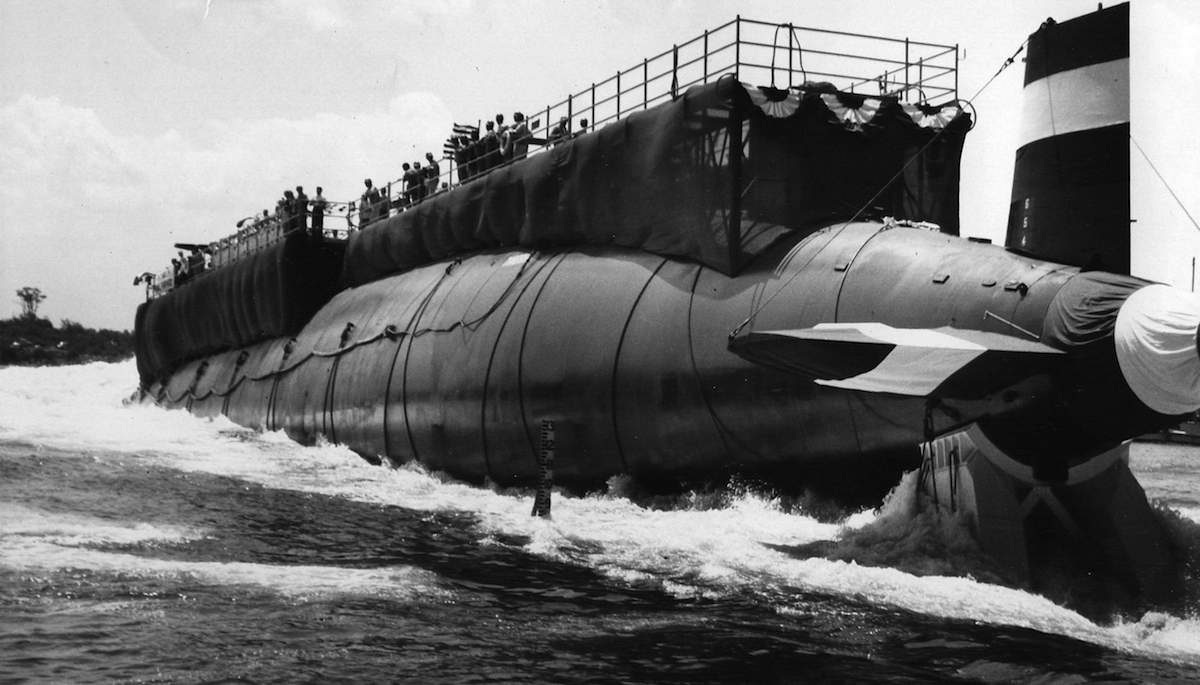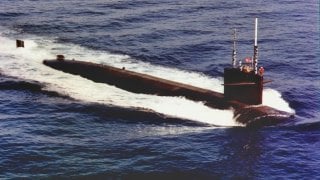A 'Leak in the Engine Room' Sealed the Fate of a U.S. Navy Submarine
Commissioned in 1961, the USS Thresher (SSN-593) was the most advanced nuclear-powered attack submarine of its time, designed to dive deeper and operate more quietly than any predecessor.
What You Need to Know: Commissioned in 1961, the USS Thresher (SSN-593) was the most advanced nuclear-powered attack submarine of its time, designed to dive deeper and operate more quietly than any predecessor.

-On April 10, 1963, during deep-diving trials off the coast of Cape Cod, the Thresher sank with all 129 crew members and civilian technicians on board, marking the worst submarine disaster in U.S. Navy history.
-While the exact cause remains uncertain, a Navy investigation suggested that a leak in the engine room led to reactor shutdown and inability to surface.
-The tragedy prompted the Navy to implement the SUBSAFE program, significantly improving submarine design, construction, and safety protocols, and preventing similar losses in subsequent years.
USS Thresher – The Worst U.S. Submarine Disaster
When USS Thresher was launched on July 9, 1960, some in the U.S. Navy considered it to be the most advanced submarine in the world. Able to reach speeds and depths never before achieved, there was much to appreciate about the nuclear-powered attack submarine USS Thresher (SSN-593).
In hindsight, it could be seen as a case of hubris.
Yet, the submarine was a major leap forward in design. Developed to find and destroy Soviet submarines, USS Thresher was actually the fastest and quietest submarine of her day – and she was also equipped with the most advanced weapons system, which included launchers for the U.S. Navy's then cutting-edge anti-submarine missile, the SUBROC. She was the lead boat of the new class of 3,700-ton nuclear-powered attack submarines.
Built at Portsmouth Naval Shipyard in Maine, and commissioned in 1961, SSN-593 began her sea trials including weapon tests in the western Atlantic and Caribbean Sea. After completion of the tests, USS Thresher returned to her builders for an overhaul. No serious problems had been found, and everything but going as planned.
In early 1963, a minor disaster occurred when following maneuvers off the coast of Charleston, South Carolina – which was observed by the U.S. Naval Antisubmarine Warfare Council – the boat was accidentally struck by a tug, resulting in damage to the ballast tanks. SSN-593 was forced to undergo repairs at the Electric Boat Company's facility in Groton, Connecticut.
The accident was merely a portent of an even worse disaster.
Lost At Sea
Following the repairs, USS Thresher began trails – and on April 10, 1963, she put to sea for a deep-diving exercise. On board were 16 officers, 96 sailors, and 17 civilian technicians. While conducting the deep-driving test off the coast of Cape Cod, the submarine unexpectedly sank to the sea floor. The USS Skylark (ASR-20), a Penguin-class submarine rescue ship, which was also participating in the drills, received a communication from USS Thresher that stated that the submarine was experiencing minor problems.
Tragically, that was to be the last that anyone heard from the doomed sub.
The boat sank in the Atlantic Ocean with all hands off the coast of New England. It was the first nuclear submarine disaster, and to this day, has the highest death toll with 129 losing their lives.
The exact cause of the accident isn't known. Mechanical failures and even Soviet interference have been suggested as the possible causes that led to the sinking and loss of the submarine. However, a U.S. Navy investigation determined the most probable cause of the accident was a leak in its engine room, which may have resulted from corrosion in its pipes.
As the boat's engine room flooded, salt-water spray shut down the nuclear reactor. As a result, USS Thresher's main ballast tank failed to blow after ice formed in its piping. The crew was likely unable to access the equipment needed to stop the flooding.
Adoption of the SUBSAFE Program
Even after half a century, few details from the court of inquiry have been released. Efforts have continued to question exactly what caused the loss of the submarine. U.S. Navy Capt. James Bryant, Retired – who had previously commanded the boat – had even sued the Navy in 2019 to force the release of unclassified investigation documents detailing the submarine’s operation during its final dive. The sea service had previously refused to grant Bryant's request for records under the Freedom of Information Act.
While the exact cause of the accident still has yet to be resolved, some good did come from the accident. In addition to improvements to the Permit-class, the disaster also forced improvements in the design and quality control of all U.S. Navy submarines. The Navy also established additional safety procedures, which included the adoption of the SUBSAFE Program. That required that each submarine pass a series of safety tests and since the completion of the effort, the Navy has suffered no further losses of the kind that tragically ended the brief service career of USS Thresher.
Finally, as she was lost at sea, USS Thresher has not been decommissioned by the U.S. Navy and remains on "Eternal Patrol."
Author Experience and Expertise: Peter Suciu
Peter Suciu is a Michigan-based writer. He has contributed to more than four dozen magazines, newspapers, and websites with over 3,200 published pieces over a twenty-year career in journalism. He regularly writes about military hardware, firearms history, cybersecurity, politics, and international affairs. Peter is also a Contributing Writer for Forbes and Clearance Jobs. You can follow him on Twitter: @PeterSuciu. You can email the author: [email protected].
Image Credit: Creative Commons.


